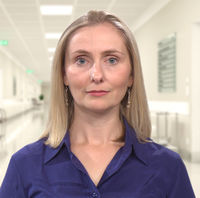Central Auckland, East Auckland, North Auckland, South Auckland, West Auckland > Private Hospitals & Specialists >
Auckland Gynaecology Group
Private Service, Gynaecology
Description
Auckland Gynaecology group (AGG) is a group of six gynaecologists and fertility specialists who have a range of special interests that include:
- infertility
- pelvic pain, endometriosis
- menstrual disorders
- colposcopy and treatment of cervical abnormalities
- urogynaecology
- menopause
- adolescent gynaecology
- cervical screening
- early pregnancy problems such as miscarriage
- vulval disease
- post pregnancy problems
- IUCD fitting
Our vision is to provide excellent healthcare to our gynaecology and fertility patients. We aim to be respectful to your needs and to have open and timely communication.
Laparoscopy
Many gynaecological investigations are performed by laparoscopy. This is a procedure to view the inside of the abdomen (stomach) through a specially lit type of mini telescope (laparoscope) that is inserted through a small cut in the abdomen. The laparoscope also contains a small camera that sends pictures to a screen that the doctor can watch.
Consultants
Note: Please note below that some people are not available at all locations.
-

Dr Karen Buckingham
Gynaecologist
Available at all locations.
-

Dr Praveen De Silva
Gynaecologist
Available at 105 Remuera Road, Remuera, Auckland
-

Professor Cindy Farquhar
Gynaecologist
Available at 105 Remuera Road, Remuera, Auckland
-

Dr Elizabeth Glanville
Gynaecologist
Available at all locations.
-

Dr Guy Gudex
Gynaecologist
Available at 105 Remuera Road, Remuera, Auckland
-

Dr Devashana Gupta
Gynaecologist
Available at 105 Remuera Road, Remuera, Auckland
-

Professor Neil Johnson
Gynaecologist
Available at 105 Remuera Road, Remuera, Auckland
-

Dr Joy Marriott
Gynaecologist
Available at 105 Remuera Road, Remuera, Auckland
-

Dr Martin Sowter
Gynaecologist
Available at 105 Remuera Road, Remuera, Auckland
Referral Expectations
We prefer to receive referrals from general practitioners, but will see women without a referral if necessary.
Most appointments will be able to be made within one - two weeks of calling. We can also accept emergency patients if appointments are available.
If surgery is required our gynaecologists operate at MercyAscot and Brightside Hospitals (overnight surgery) and day surgery at Auckland City Surgical Services, 105 Remuera Road and Columba Clinic at Ascot.
To save time you can use our online patient registration form
Fees and Charges Description
Auckland Gynaecology Group is a Southern Cross Affiliated Provider. Please contact us for further details.
Common Conditions / Procedures / Treatments
The endometrium is the name of the tissue that lines your uterus (womb). Endometriosis is a condition where tissue, like the endometrium, grows in other parts of the body. Usually these growths occur inside the pelvic cavity in places such as the ovaries, bowel, or a lining of the pelvic cavity and abdomen called the peritoneum. Each month, as the endometrial lining of the uterus builds up with blood that will be lost during your period, these other growths of endometrial tissue get bigger and can bleed and cause inflammation and adhesions (internal scarring). Some women with this condition do not have many symptoms, whereas others suffer severe pain and problems such as infertility and tiredness. Treatment includes medication that will help control the pain and inflammation, and some women may need surgery to remove the tissue growths.
The endometrium is the name of the tissue that lines your uterus (womb). Endometriosis is a condition where tissue, like the endometrium, grows in other parts of the body. Usually these growths occur inside the pelvic cavity in places such as the ovaries, bowel, or a lining of the pelvic cavity and abdomen called the peritoneum. Each month, as the endometrial lining of the uterus builds up with blood that will be lost during your period, these other growths of endometrial tissue get bigger and can bleed and cause inflammation and adhesions (internal scarring). Some women with this condition do not have many symptoms, whereas others suffer severe pain and problems such as infertility and tiredness. Treatment includes medication that will help control the pain and inflammation, and some women may need surgery to remove the tissue growths.
Fibroids are noncancerous growths or tumours on the muscular part of the uterus (womb); sometimes they are also called myomas. Fibroids may be very small (about 5mm) or can grow to be quite large (about 100mm). Many women with fibroids do not notice any symptoms and will not need treatment, whereas others may experience problems such as painful and heavy periods. Treatment includes medication to shrink the fibroids and, in some women, surgical removal.
Fibroids are noncancerous growths or tumours on the muscular part of the uterus (womb); sometimes they are also called myomas. Fibroids may be very small (about 5mm) or can grow to be quite large (about 100mm). Many women with fibroids do not notice any symptoms and will not need treatment, whereas others may experience problems such as painful and heavy periods. Treatment includes medication to shrink the fibroids and, in some women, surgical removal.
An ovarian cyst is a fluid-filled sac or pouch in the ovary. In most cases, the cyst grows as a result of ovulation (when the egg is released from the ovary), and it will usually shrink over time. Sometimes, the ovarian cyst may cause pain. The best way to check for an ovarian cyst is by ultrasound examination, and the treatment will depend on how troublesome the symptoms are. Sometimes it is best to leave the cyst alone and just check it regularly with ultrasound. In other cases it may need to be removed by laparoscopic surgery.
An ovarian cyst is a fluid-filled sac or pouch in the ovary. In most cases, the cyst grows as a result of ovulation (when the egg is released from the ovary), and it will usually shrink over time. Sometimes, the ovarian cyst may cause pain. The best way to check for an ovarian cyst is by ultrasound examination, and the treatment will depend on how troublesome the symptoms are. Sometimes it is best to leave the cyst alone and just check it regularly with ultrasound. In other cases it may need to be removed by laparoscopic surgery.
Polycystic ovarian syndrome (PCOS) is a hormonal disorder that can cause you to have a variety of symptoms, including no periods or irregular periods, increased hair growth on the face and body, acne (pimples) and increased bodyweight. PCOS is also one of the main causes of infertility in women. The ovaries of women with PCOS often contain many small cysts (fluid-filled sacs), but this does not seem to be the cause of the condition. For women who have not reached menopause, the most common treatment is the birth control pill, which will regulate your periods. There are also other medicines that can help control the symptoms.
Polycystic ovarian syndrome (PCOS) is a hormonal disorder that can cause you to have a variety of symptoms, including no periods or irregular periods, increased hair growth on the face and body, acne (pimples) and increased bodyweight. PCOS is also one of the main causes of infertility in women. The ovaries of women with PCOS often contain many small cysts (fluid-filled sacs), but this does not seem to be the cause of the condition. For women who have not reached menopause, the most common treatment is the birth control pill, which will regulate your periods. There are also other medicines that can help control the symptoms.
Many women experience feelings of tension, anger, fatigue and depression just before and during the first days of their menstrual period. This is called premenstrual syndrome (PMS) and is probably caused by the change in hormone levels. In most women with PMS, symptoms will not be severe enough to require treatment, but some will need to discuss their symptoms with a doctor. Sometimes symptoms can be improved by avoiding some types of food, such as coffee and foods high in salt.
Many women experience feelings of tension, anger, fatigue and depression just before and during the first days of their menstrual period. This is called premenstrual syndrome (PMS) and is probably caused by the change in hormone levels. In most women with PMS, symptoms will not be severe enough to require treatment, but some will need to discuss their symptoms with a doctor. Sometimes symptoms can be improved by avoiding some types of food, such as coffee and foods high in salt.
Menstruation is the medical name for your monthly period. This is when blood and tissue from the lining of the uterus (womb) is shed through the vagina and out of the body. Menstruation starts at puberty and it is stimulated by hormones that make a girl’s body able to become pregnant. This usually happens anytime between the ages of 9 and 16 years. Menstruation will recur about every 28 days (the menstrual cycle), unless interrupted by pregnancy, and will stop at menopause, which occurs at about 50 years of age. There are a number of problems that can occur with menstruation ranging from mild to severe. More than half of all women will have cramps (dysmenorrhoea) during the first day or two of their period. Other problems include very heavy or long periods (menorrhagia) or no periods (amenorrhoea).
Menstruation is the medical name for your monthly period. This is when blood and tissue from the lining of the uterus (womb) is shed through the vagina and out of the body. Menstruation starts at puberty and it is stimulated by hormones that make a girl’s body able to become pregnant. This usually happens anytime between the ages of 9 and 16 years. Menstruation will recur about every 28 days (the menstrual cycle), unless interrupted by pregnancy, and will stop at menopause, which occurs at about 50 years of age. There are a number of problems that can occur with menstruation ranging from mild to severe. More than half of all women will have cramps (dysmenorrhoea) during the first day or two of their period. Other problems include very heavy or long periods (menorrhagia) or no periods (amenorrhoea).
The endometrium is the lining of your uterus (womb). Endometrial ablation is the surgical removal or destruction of this lining. There are different methods of destroying the endometrium including electricity, laser therapy or freezing. A specialist performs the operation and it is done through the vagina, so there is no need for the abdomen to be cut open. The endometrium will heal leaving scarring, which usually reduces or stops menstrual periods. In women who have very heavy periods (menorrhagia), an endometrial ablation can be done instead of a hysterectomy as it is an easier procedure than a hysterectomy and is quicker to recover from. Endometrial ablation is only performed in women who no longer wish to have children.
The endometrium is the lining of your uterus (womb). Endometrial ablation is the surgical removal or destruction of this lining. There are different methods of destroying the endometrium including electricity, laser therapy or freezing. A specialist performs the operation and it is done through the vagina, so there is no need for the abdomen to be cut open. The endometrium will heal leaving scarring, which usually reduces or stops menstrual periods. In women who have very heavy periods (menorrhagia), an endometrial ablation can be done instead of a hysterectomy as it is an easier procedure than a hysterectomy and is quicker to recover from. Endometrial ablation is only performed in women who no longer wish to have children.
Cervical dysplasia is the growth of abnormal cells around the cervix (entrance to the uterus). Although this condition is not cancer there is a small risk that these cells could become cancerous. Sometimes no treatment is needed as the condition may improve by itself. For more severe dysplasia, treatment involves removing the abnormal cells by freezing, laser therapy (a tiny beam of light) or electrical burning. Whether you have treatment or not, you should have more frequent Pap smears in the future.
Cervical dysplasia is the growth of abnormal cells around the cervix (entrance to the uterus). Although this condition is not cancer there is a small risk that these cells could become cancerous. Sometimes no treatment is needed as the condition may improve by itself. For more severe dysplasia, treatment involves removing the abnormal cells by freezing, laser therapy (a tiny beam of light) or electrical burning. Whether you have treatment or not, you should have more frequent Pap smears in the future.
Cervical dysplasia is the growth of abnormal cells around the cervix (entrance to the uterus). Although this condition is not cancer there is a small risk that these cells could become cancerous.
Sometimes no treatment is needed as the condition may improve by itself. For more severe dysplasia, treatment involves removing the abnormal cells by freezing, laser therapy (a tiny beam of light) or electrical burning. Whether you have treatment or not, you should have more frequent Pap smears in the future.
A Pap smear is a test to check for signs of cancer on the cervix (entrance to the uterus). A doctor will put an instrument called a speculum into the vagina to open it, and then gently wipe or brush a few cells from the cervix to send to the laboratory for testing. A Pap smear can show if cervical cells are going through any changes that happen before cancer grows. It will also show if cancer cells are present. Regular Pap smears make it possible to prevent cancer before it grows, or to pick up the cancer early so that it is more easily cured. A National Cervical Screening Programme aims to provide all New Zealand women with regular smears and recommends that a Pap smear be done every three years between the ages of 20 and 70 years.
A Pap smear is a test to check for signs of cancer on the cervix (entrance to the uterus). A doctor will put an instrument called a speculum into the vagina to open it, and then gently wipe or brush a few cells from the cervix to send to the laboratory for testing. A Pap smear can show if cervical cells are going through any changes that happen before cancer grows. It will also show if cancer cells are present. Regular Pap smears make it possible to prevent cancer before it grows, or to pick up the cancer early so that it is more easily cured. A National Cervical Screening Programme aims to provide all New Zealand women with regular smears and recommends that a Pap smear be done every three years between the ages of 20 and 70 years.
A colposcopy is a detailed examination of the cervix (entrance to the uterus) with a specially lit microscope (colposcope). As with a Pap smear, an instrument called a speculum is inserted into the vagina, and then the colposcope is positioned outside the vagina with its light directed on the cervix. A specialist will perform a colposcopy if your Pap smear has shown abnormal or cancerous cells on the cervix. During the colposcopy further samples of tissue (biopsies) are usually removed and examined in the laboratory so the doctor can get a clearer idea of the extent of the abnormal cells.
A colposcopy is a detailed examination of the cervix (entrance to the uterus) with a specially lit microscope (colposcope). As with a Pap smear, an instrument called a speculum is inserted into the vagina, and then the colposcope is positioned outside the vagina with its light directed on the cervix. A specialist will perform a colposcopy if your Pap smear has shown abnormal or cancerous cells on the cervix. During the colposcopy further samples of tissue (biopsies) are usually removed and examined in the laboratory so the doctor can get a clearer idea of the extent of the abnormal cells.
The most common vaginal infections are yeast infections (also called candidiasis or thrush), trichomoniasis, or bacterial infections (also called bacterial vaginosis). Symptoms of an infection may include irritation, itching, discharge and odour. To make a diagnosis a doctor will usually do a vaginal swab, which involves wiping a type of cotton bud gently across the infected area. The swab is then sent to the laboratory for analysis. There are many medicines that can successfully treat these infections.
The most common vaginal infections are yeast infections (also called candidiasis or thrush), trichomoniasis, or bacterial infections (also called bacterial vaginosis). Symptoms of an infection may include irritation, itching, discharge and odour. To make a diagnosis a doctor will usually do a vaginal swab, which involves wiping a type of cotton bud gently across the infected area. The swab is then sent to the laboratory for analysis. There are many medicines that can successfully treat these infections.
Menopause is also called the “change of life” and is the time when your periods will become irregular and stop. This is a natural process in all women and for most it will occur between the ages of 45 and 55 years. Menopause is brought on by decreasing levels of the hormone oestrogen and this can cause a variety of symptoms, including hot flushes, night sweats, mood swings, sleeping problems, memory problems, depression and vaginal dryness. Some women do not notice any symptoms or they are very mild, whereas others experience more severe problems and should go to their doctor for advice. There are many treatments available to reduce the symptoms associated with menopause and, in some cases, lifestyle changes can also help.
Menopause is also called the “change of life” and is the time when your periods will become irregular and stop. This is a natural process in all women and for most it will occur between the ages of 45 and 55 years. Menopause is brought on by decreasing levels of the hormone oestrogen and this can cause a variety of symptoms, including hot flushes, night sweats, mood swings, sleeping problems, memory problems, depression and vaginal dryness. Some women do not notice any symptoms or they are very mild, whereas others experience more severe problems and should go to their doctor for advice. There are many treatments available to reduce the symptoms associated with menopause and, in some cases, lifestyle changes can also help.
Hormone replacement therapy (HRT) is when female hormones (oestrogen by itself or with progesterone) are given to a woman during or after menopause when the production of oestrogen by the ovaries declines. The hormones can be taken as tablets, implants or skin patches. HRT has become less popular in recent years because a large study in the USA found that long-term use of HRT can increase the risk of some serious diseases, such as breast cancer and blood clots. However, for some women, short-term use of HRT (no more than 3–4 years) can provide relief from symptoms caused by having less oestrogen in their bodies, such as hot flushes and loss of bone density. The risks and benefits of HRT should be thoroughly discussed with a doctor before treatment begins.
Hormone replacement therapy (HRT) is when female hormones (oestrogen by itself or with progesterone) are given to a woman during or after menopause when the production of oestrogen by the ovaries declines. The hormones can be taken as tablets, implants or skin patches. HRT has become less popular in recent years because a large study in the USA found that long-term use of HRT can increase the risk of some serious diseases, such as breast cancer and blood clots. However, for some women, short-term use of HRT (no more than 3–4 years) can provide relief from symptoms caused by having less oestrogen in their bodies, such as hot flushes and loss of bone density. The risks and benefits of HRT should be thoroughly discussed with a doctor before treatment begins.
A person with urinary incontinence is unable to control the release of urine from their bladder. This may be an occasional leakage or a complete inability to hold on to their urine. Women experience incontinence more often than men, and this may result from muscle damage during pregnancy and childbirth or the changes associated with menopause. The most common type of urinary incontinence in women is stress incontinence. This is when urine leaks out when movements, such as coughing, laughing or sneezing put pressure on the bladder. The treatment of urinary incontinence will depend on the cause of the problem, but may include exercises, medication or surgery.
A person with urinary incontinence is unable to control the release of urine from their bladder. This may be an occasional leakage or a complete inability to hold on to their urine. Women experience incontinence more often than men, and this may result from muscle damage during pregnancy and childbirth or the changes associated with menopause. The most common type of urinary incontinence in women is stress incontinence. This is when urine leaks out when movements, such as coughing, laughing or sneezing put pressure on the bladder. The treatment of urinary incontinence will depend on the cause of the problem, but may include exercises, medication or surgery.
Sling procedures are common surgical operations to stop stress incontinence. This is a condition where urine leaks out when movements, such as coughing, laughing or sneezing put pressure on the bladder. Stress incontinence occurs when the muscles supporting the urethra (tube that carries the urine out of the body) become weak and the urethra no longer works well as a valve to keep the urine in the bladder. Sometimes this results from the effects of childbirth. Sling procedures provide support to the weakened muscles by placing a stitch or strip of mesh under the urethra so that it won’t accidentally release urine when there is pressure on the bladder. Burch Procedure In the Burch procedure, permanent stitches are placed on both sides of the urethra to give it more support. The Burch procedure is done under a general anaesthetic (you sleep throughout the procedure) and can be performed by laparoscopic surgery. Tension-Free Vaginal Tape (TVT) Procedure In tension-free vaginal tape (TVT) surgery, a mesh-like tape is placed under the urethra to give it support. The TVT procedure is done through small cuts in the vagina and in your pubic area or upper thighs. It is usually performed under local anaesthetic (this means that you don’t have to go to sleep during the operation).
Sling procedures are common surgical operations to stop stress incontinence. This is a condition where urine leaks out when movements, such as coughing, laughing or sneezing put pressure on the bladder. Stress incontinence occurs when the muscles supporting the urethra (tube that carries the urine out of the body) become weak and the urethra no longer works well as a valve to keep the urine in the bladder. Sometimes this results from the effects of childbirth. Sling procedures provide support to the weakened muscles by placing a stitch or strip of mesh under the urethra so that it won’t accidentally release urine when there is pressure on the bladder. Burch Procedure In the Burch procedure, permanent stitches are placed on both sides of the urethra to give it more support. The Burch procedure is done under a general anaesthetic (you sleep throughout the procedure) and can be performed by laparoscopic surgery. Tension-Free Vaginal Tape (TVT) Procedure In tension-free vaginal tape (TVT) surgery, a mesh-like tape is placed under the urethra to give it support. The TVT procedure is done through small cuts in the vagina and in your pubic area or upper thighs. It is usually performed under local anaesthetic (this means that you don’t have to go to sleep during the operation).
If the uterus (womb) or bladder slips out of position, this is referred to as a prolapse. It is caused when the supporting muscles become weak, allowing a part of the uterus or bladder to bulge into the vagina. The most common reason that these muscles become weak is childbirth, and a uterine prolapse or bladder prolapse (also called cystocoele) is more common in women who have had a lot of babies. Symptoms include pain, heaviness in the vaginal area and a frequent need to pass urine. In mild cases, exercises may help improve the symptoms, but women with more severe prolapses may need to have surgery.
If the uterus (womb) or bladder slips out of position, this is referred to as a prolapse. It is caused when the supporting muscles become weak, allowing a part of the uterus or bladder to bulge into the vagina. The most common reason that these muscles become weak is childbirth, and a uterine prolapse or bladder prolapse (also called cystocoele) is more common in women who have had a lot of babies. Symptoms include pain, heaviness in the vaginal area and a frequent need to pass urine. In mild cases, exercises may help improve the symptoms, but women with more severe prolapses may need to have surgery.
A hysterectomy is an operation to remove your uterus (womb). Some types of hysterectomies include the removal of other organs as well, and this will depend on the reason for the operation. A hysterectomy is a treatment for many different diseases and conditions and it can be done through the vagina or through a cut in the abdomen.
A hysterectomy is an operation to remove your uterus (womb). Some types of hysterectomies include the removal of other organs as well, and this will depend on the reason for the operation. A hysterectomy is a treatment for many different diseases and conditions and it can be done through the vagina or through a cut in the abdomen.
An oophorectomy is an operation to remove one or both ovaries. It is done for many reasons including ovarian cancer, ovarian cysts or to remove the source of the hormone oestrogen that is produced by the ovaries and can stimulate some cancers. If both ovaries are removed, your periods will stop and you will not be able to have children. Sometimes an oophorectomy is done together with a hysterectomy.
An oophorectomy is an operation to remove one or both ovaries. It is done for many reasons including ovarian cancer, ovarian cysts or to remove the source of the hormone oestrogen that is produced by the ovaries and can stimulate some cancers. If both ovaries are removed, your periods will stop and you will not be able to have children. Sometimes an oophorectomy is done together with a hysterectomy.
This is an operation where the cervix (entrance to the uterus) is dilated and a hysteroscope (small lighted mini telescope) is inserted into the uterus through the vagina and cervix so the specialist can see the inside of the uterus. If no cancer is present, a small spoon-like instrument with a long handle, called a curette, is inserted and the lining of the uterus is scraped off and sent to the laboratory for examination. This procedure can be done under a general (you are asleep) or local (you are awake but the area being investigated is numb) anaesthetic.
This is an operation where the cervix (entrance to the uterus) is dilated and a hysteroscope (small lighted mini telescope) is inserted into the uterus through the vagina and cervix so the specialist can see the inside of the uterus. If no cancer is present, a small spoon-like instrument with a long handle, called a curette, is inserted and the lining of the uterus is scraped off and sent to the laboratory for examination. This procedure can be done under a general (you are asleep) or local (you are awake but the area being investigated is numb) anaesthetic.
About one in every six couples in New Zealand will experience infertility. This is when they are unable to conceive a baby after one year of trying, or when the woman has been unable to carry a pregnancy to a live birth. In about half of the cases, the cause of infertility is due to a problem with the woman and, in the other half, the problem will be with the man. There are now many treatments available for infertile couples and, in many cases, these treatments will result in a successful pregnancy. Doctors with a special interest and expertise in this area will usually provide the best opportunity for treatment. Local support groups and societies can be of help during the stressful time of having tests and treatment.
About one in every six couples in New Zealand will experience infertility. This is when they are unable to conceive a baby after one year of trying, or when the woman has been unable to carry a pregnancy to a live birth. In about half of the cases, the cause of infertility is due to a problem with the woman and, in the other half, the problem will be with the man. There are now many treatments available for infertile couples and, in many cases, these treatments will result in a successful pregnancy. Doctors with a special interest and expertise in this area will usually provide the best opportunity for treatment. Local support groups and societies can be of help during the stressful time of having tests and treatment.
About one in every six couples in New Zealand will experience infertility. This is when they are unable to conceive a baby after one year of trying, or when the woman has been unable to carry a pregnancy to a live birth. In about half of the cases, the cause of infertility is due to a problem with the woman and, in the other half, the problem will be with the man. There are now many treatments available for infertile couples and, in many cases, these treatments will result in a successful pregnancy.
Doctors with a special interest and expertise in this area will usually provide the best opportunity for treatment. Local support groups and societies can be of help during the stressful time of having tests and treatment.
Public Transport
The Auckland Transport website is a good resource to plan your public transport options.
Pharmacy
Website
Contact Details
105 Remuera Road, Remuera, Auckland
Central Auckland
-
Phone
(09) 524 1222
-
Fax
(09) 524 1221
Healthlink EDI
aklgynae
Email
Website
105 Remuera Road
Remuera
Auckland
Street Address
105 Remuera Road
Remuera
Auckland
Postal Address
PO Box 109 017
Newmarket
Auckland
Tōtara Health, 1 McCrae Way, New Lynn, Auckland
West Auckland
-
Phone
(09) 524 1222
-
Fax
(09) 524 1221
Healthlink EDI
aklgynae
Email
Website
Was this page helpful?
This page was last updated at 9:51AM on September 21, 2023. This information is reviewed and edited by Auckland Gynaecology Group.

